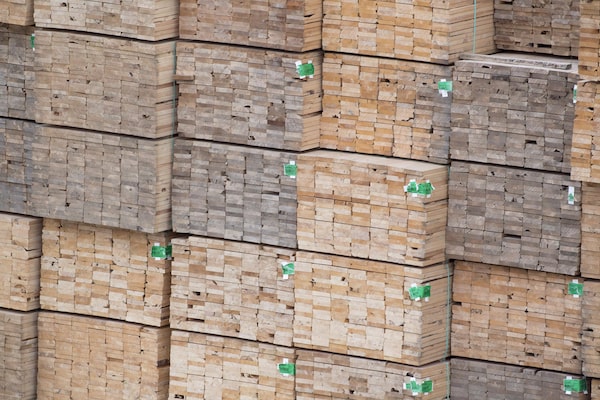
Softwood lumber is pictured along the Fraser River in Richmond, B.C., on April 25, 2017. Canfor reported third quarter results Friday.JONATHAN HAYWARD/The Canadian Press
The work-from-home trend that drove lumber prices to record levels and helped producer Canfor Corp. realize record high revenues in the third quarter is expected to continue to provide benefits going forward, CEO Don Kayne says.
The Vancouver-based company expects strong lumber prices to continue through the end of 2020 despite the recent softening it attributes to seasonal slowdowns.
“Pre-pandemic, for many people, their home was primarily for shelter, for sleeping and eating. Now the home is becoming an office, a school, an entertainment area and a recreation space, in addition to sleeping and eating,” Kayne said on a conference call Friday.
“We see evidence of this in our strong R&R (repair and remodel) and DIY (do-it-yourself) demand and believe it will continue to evolve and increase in importance. We’re also seeing a shift from urban living to suburban and rural living as people buy more spacious single-family homes and have greater flexibility to work from home.”
He added low interest rates, aging house inventories and strong U.S. housing starts will also continue to drive strong demand for lumber.
Canfor noted the North American price for Western SPF (spruce, pine and fir) 2x4s reached an all-time high of US$955 per thousand board feet early in September, before dropping in October to a current average of US$768.
The forest products company reported Thursday a profit of $218 million in the three months ended Sept. 30, compared with a loss of $88.5 million a year earlier.
Adjusted net income increased to $259 million or $2.07 per share, up from a loss of $42.6 million or 34 cents per share in the third quarter of 2019, as sales grew 42 per cent to $1.55 billion from $1.09 billion.
Canfor was expected to report $1.61 per share in adjusted earnings on $1.42 billion of revenues, according to financial data firm Refinitiv.
In a report, RBC analyst Paul Quinn said Canfor beat expectations on adjusted earnings from lumber but missed on a higher adjusted loss in pulp and paper despite greater revenue.
The company noted total third-quarter lumber shipments reached 1.37 billion board feet, up 19 per cent over the second quarter.
About 44 per cent of Canfor’s production is generated in B.C., four per cent in Alberta, 22 per cent in Europe and 30 per cent in the United States.
Kayne said the price volatility in North America is driving increased industry interest in switching to a European model where most lumber prices are negotiated in advance on a quarterly basis.
Your time is valuable. Have the Top Business Headlines newsletter conveniently delivered to your inbox in the morning or evening. Sign up today.